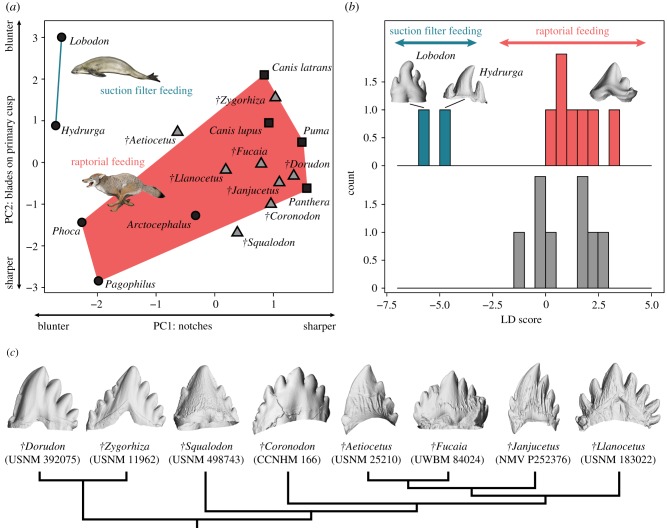Figure 2.
Tooth sharpness separates feeding modes in modern mammals, indicating no fossil cetaceans were tooth filter feeders. (a) Principal component analysis based on 10 measurements describing the sharpness of the main cusp and notch of postcanine teeth. Extant terrestrial carnivorans are denoted by black squares, extant pinnipeds by black circles, and fossil cetaceans by grey triangles. The morphospace defined by species that use their teeth only for raptorial feeding is shown in red, whereas that of the suction filter-feeding leopard and crabeater seals is shown in blue. Extinct cetaceans, including toothed mysticetes, cluster with non-filtering raptorial species. (b) Discriminant function analysis of extant taxa with known feeding habits only (top), followed by a classification of fossil specimens based on the resulting discriminant function (bottom). The suction filter-feeding seals (blue bars) are well separated from terrestrial carnivorans and raptorial seals (red), as well as all of the fossil cetaceans (grey). (c) Overview of the tooth morphology of the fossil cetaceans included in this study. Phylogeny follows [5]. Some teeth were mirrored to ensure consistent orientation. See electronic supplementary material for details. Not to scale.

